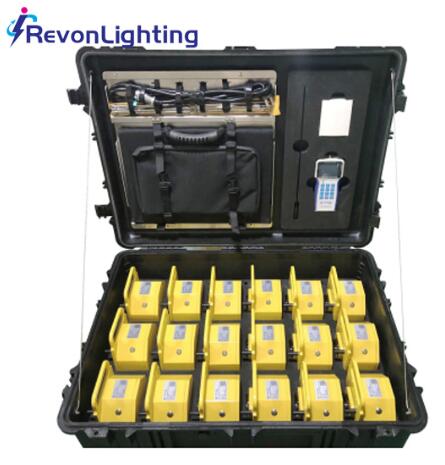Portable Helicopter Landing Zone Lights: A Guide to Safe and Efficient Operations
Portable helicopter landing zone lights are essential for establishing safe and visible landing areas in temporary or remote locations. Used in military operations, emergency medical services (EMS), disaster relief, and offshore operations, these lights ensure safe landings in low-visibility conditions. This article explores key features, regulations, and best practices for using portable helicopter landing zone lights effectively.
1. Importance of Portable Helicopter Landing Zone Lights
Unlike permanent helipad lighting, portable systems offer flexibility and quick deployment. Their primary functions include:
Enhancing Visibility: Critical for night operations or adverse weather.
Marking Landing Zones (LZ): Clearly defining boundaries for pilots.
Improving Safety: Reducing the risk of accidents in unimproved or unfamiliar areas.
2. Types of Portable Helicopter Landing Zone Lights
Several lighting options are available, each suited for different scenarios:
a. Battery-Powered LED Lights
Lightweight and durable.

Long battery life (some models last 24+ hours).
Weather-resistant for outdoor use.
b. Solar-Powered Lights
Ideal for prolonged operations.
Eco-friendly and low maintenance.
Best for remote or off-grid locations.
c. Chemiluminescent (Glow Sticks)
Emergency backup option.
No power source required.
Short-term use only.
d. Inflatable or Stake-Mounted Lights
Easy to transport and set up.
Used in soft terrain or uneven surfaces.
3. Key Features to Consider
When selecting portable helicopter landing zone lights, evaluate:
| portable helicopter landing zone lights |
Brightness & Color: FAA/ICAO-compliant lights typically use white, green, or amber.
Durability: Must withstand wind, rain, and rough handling.
Portability: Lightweight and compact for rapid deployment.
Regulatory Compliance: Meets aviation authority standards (FAA, ICAO, SACAA).
4. Regulatory and Safety Standards
Different countries have specific requirements for portable landing zone lights:
FAA (U.S.): AC 150/5345-46E outlines specifications.
ICAO: Annex 14 provides international guidelines.
SACAA (South Africa): Part 139 regulations apply.
Operators must ensure lights are visible from at least 3 nautical miles and do not cause glare for pilots.
5. Best Practices for Deployment
a. Site Preparation
Clear debris and level the ground.
Ensure no obstacles interfere with approach paths.
b. Light Placement
Perimeter Lights: Mark the LZ boundary (typically 5m–10m apart).
Approach Lights: Guide pilots during descent.
Wind Indicator: A lighted windsock helps with alignment.
c. Maintenance & Storage
Regularly check battery levels.
Store in protective cases to prevent damage.
6. Applications of Portable Helicopter Landing Zone Lights
Military & Search and Rescue (SAR): Rapid deployment in combat or disaster zones.
EMS & Air Ambulance: Safe landings near accident scenes.
Offshore & Mining: Temporary landing zones on ships or remote sites.
Event Security: VIP or emergency landings at large gatherings.
7. Emerging Technologies
Advancements in portable lighting include:
Wireless Control Systems: Remote activation and brightness adjustment.
Smart Sensors: Automatic activation based on ambient light or helicopter proximity.
Modular Designs: Expandable setups for larger landing zones.
Portable helicopter landing zone lights are indispensable for aviation safety in temporary or challenging environments. By choosing the right type, adhering to regulations, and following best deployment practices, operators can ensure reliable and secure landings. As technology evolves, these systems will become even more efficient, further enhancing flight safety in dynamic conditions.
